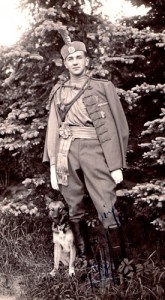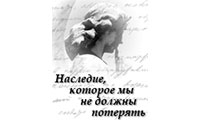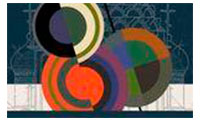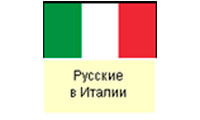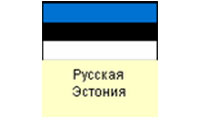The Old Believers of Riga
Arnold Podmazov
Riga Old Believers During the Soviet Period (1940–1941, 1944–1991)
The 1940s brought radical changes in the history of Latvia Old Believers. In June 1940, the Red Army units entered Latvia. From the August of 1940, the Soviet legislation came into effect on Latvia’s territory – that included Soviet laws on religious cults. On July 29, 1940 the new, Soviet government of Latvia passed the Law on Land Reform, according to which well-to-do farmers and other landowners, including religious communities, were allowed to retain in their possession no more than than 30 hectares of their land, while the rest became the property of the state. The buildings, goods, and equipment became also nationalized, together with the land.
According to the new legislation, a religious community lost the right to engage in charity work, to open schools, hospitals, and printing shops. All public organizations of Riga Old Believers were liquidated. Religious education of any kind was forbidden, including the preparation of clergy, Sunday schools, etc. Religious propaganda outside of the church was not allowed, while all functions of religious communities were reduced only to liturgical services in the church buildings.
The Soviet repressions of 1940–1941 also affected Old Believers. Many prominent Old Believers were arrested, executed, sent to Stalin’s camps or to the exile in Siberia. One of the most renowned Old Believers’ public figures M.A. Kallistratov was arrested, and subsequently shot in June 1941. V. G. Kurdyachev, the Chairman of the Riga Grebenshchikov Community Council in 1924 till 1940, perished in the Gulag camps. I. N. Zavoloko spent eighteen years in prison and exile. This tragic list could go on and on.
After the Soviet power was restored in 1944, the Soviet atheist regime was reestablished as well. Despite restrictions of religious freedom, harsh control of the authorities, and attempts to tarnish the reputation of the church, the Bespopovtsy Old Believers remained faithful to their traditions. During the post-war period, several unofficial spiritual centers of the Old Believers’ faith continued to exist, one of which was traditionally located at the Riga Grebenshchikov Old Believers’ Community. Its role was not limited to celebrating liturgical services (which did not cease even for a single day, even under Stalin’s regime and at the time of Khrushchev’s persecutions) and to maintaining ties with other communities, but also included the publication of The Old Believers’ Church Calendar. The first issue after the war was published in 1949, the next one came out in 1954. Since 1954 the Calendar was published every year until the end of Soviet regime in Latvia.
The calendar was an annual sizable edition, which demonstrated a high quality of printing. It contained rubrics for church services, calendars of movable feasts (Paschalia), other feasts and fasts, as well as different essays, mostly on the history of the Old Believers’ faith, reports regarding life in various communities, and other materials. The Calendar was colorfully edited and included many photographs. The editor and constant contributor of the edition (1954–1985) was Lavrenty Silovich Michailov (1913–1985), he was also the Chairman of the Grebenshchikov Community since 1956.
After returning from the exile, Ivan Zavoloko likewise became a regular contributor to the Calendar, publishing there many articles on the history of Old Believers’ church, as well as dozens of brief notes in the column “Memorable Dates.” Under the circumstances where no other Old Believer publications were available, the Calendar published by the Grebenshchikov Community throughout the Soviet years was a significant unifying factor. By its content, to use the words of the specialist in Slavic studies and researcher of the Latvian Old Believers’ history Boris Infantyev (1921–2009), this Calendar “became a genuine encyclopedia of the Old Believers’ tradition”. After the death of Lavrenty Mikhailov, the calendar was edited by Ioann Mirolyubov (until 2002).
The community’s participation in the first postwar Congress of Pomorians was a significant event in the life of the Riga Grebenshchikov Community. The Congress took place in Vilnius in 1966, being organized by the Higher Council of Old Believers in the Lithuanian SSR. Representatives of the Riga Grebenshchikov Community participated also in another Congress in Vilnius in 1974 and in the Council (Sobor) of 1988 devoted to the Millennium of the Baptism of Rus. It has to be noted that this, in fact, was the first Council of Pomorians that brought together Old Believers from all Soviet republics. The Council formed several commissions which included the representatives of the Grebenshchikov Community, spiritual fathers Ioann Mirolyubov and Alexiy Zhilko.
In February 1989 Congress of Latvia Old Believers’ was held in Riga. The Congress elected the Central Council of the Old Orthodox Pomorian Church of Latvia. The following commissions were formed to assist the Central Council: the Commission on Spiritual Culture, on Education, of Publications, Auditing Commission. The spiritual father of the Riga Grebenshchikov Community Ioann Mirolyubov was elected the Chairman of the Council.
Based on the decision of the Congress, a two-year Theological School was opened at the Riga Grebenshchikov Community in 1989. Apart from local Old Believers, the school accepted students from Belarus, Moscow, and Leningrad. Greater attention was paid to spiritual and cultural education. The Society of Friends of Old Russian Culture was created under the auspices of the Grebenshchikov Community, and a library was opened.
Thus, at the end of the 1980s the Riga Old Believers once again found themselves at the center of historic events. Largely due to the contribution of the Grebenshchikov Community, it was possible to lay the foundations for religious education and publishing work, to coordinate the activities of the Old Believers’ communities and to involve active parishioners in the community work for the good of the church.
Content
- Introduction
- Schism and “Old Belief”
- Confessional Characteristics of Old Believers in Latvia
- Old Believers’ Church Building and Liturgy
- Books and Book Culture
- Iconographic Traditions of Riga Old Believers
- Pomorian Old Believer Traditions of the Art of Copper Casting
- Old Believer Churches in Riga
- Old Believer Societies in Riga
- Old Russian Residents of Riga and Old Believers in the 18th century
- The Years of Prosperity and the Years of Misery: Riga’s Old Believers in the 19th Century
- Riga Old Believers at the Turn of 19th and 20th Centuries
- Riga Old Believers in the Independent Latvia (1918–1940)
- Riga Old Believers During the Soviet Period (1940–1941, 1944–1991)
- Riga Old Believers after the Restoration of Latvia’s Independence
- Photogallery
- About the Project. The Old Believers of Riga: 250 Years of Cultural Historical Experience


